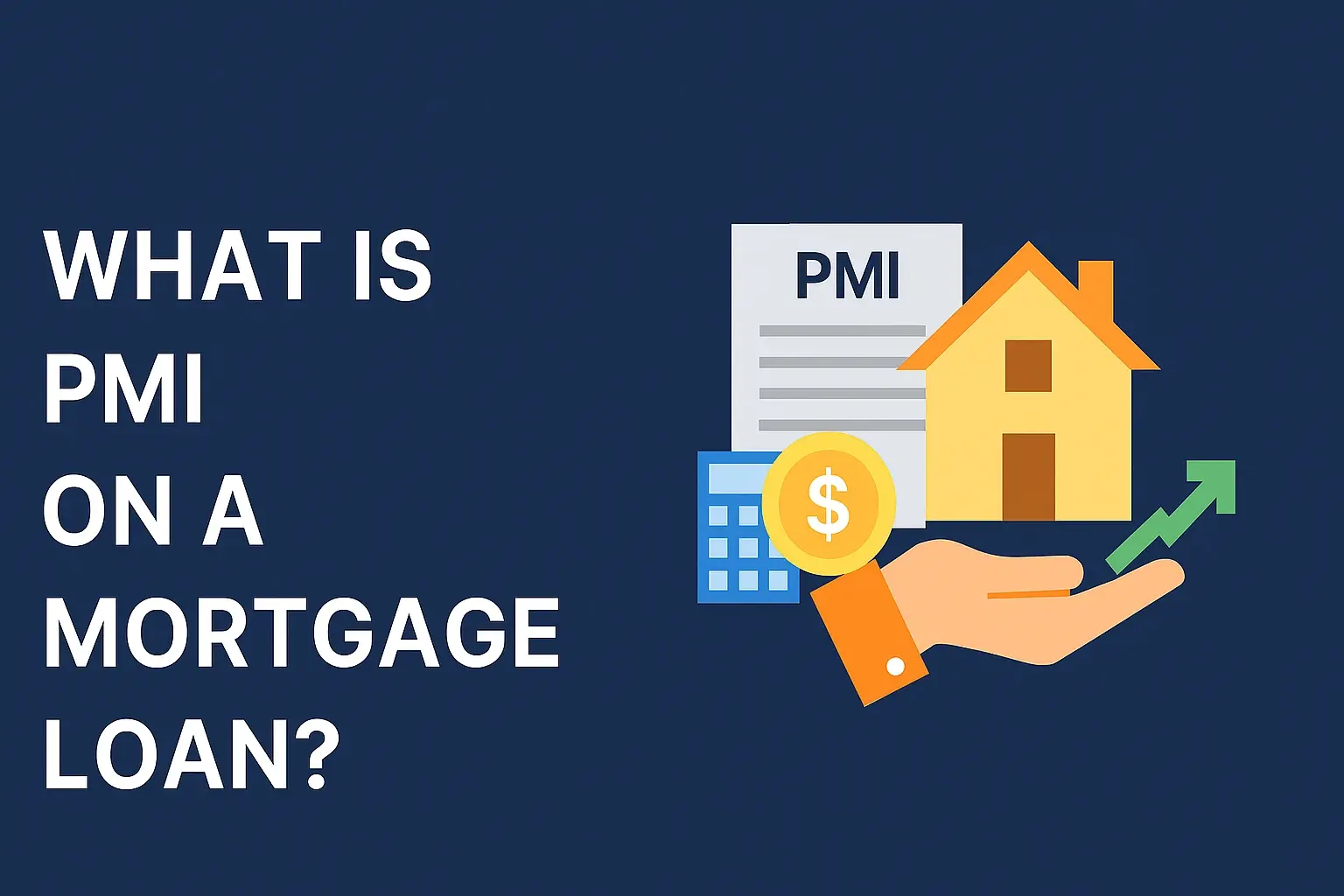-
Posted on: 10 Jun 2025

-
Ready to take control of your financial future? This comprehensive guide breaks down the essential steps for credit repair, empowering you to boost your credit score significantly in 2025. Discover actionable strategies, understand common pitfalls, and build a stronger financial foundation.
Understanding Credit Scores in 2025
Your credit score is a three-digit number that lenders use to assess your creditworthiness. In 2025, understanding how this number is calculated is the first crucial step in any effective credit repair journey. The most common scoring models, FICO and VantageScore, consider several key factors, each weighted differently. While the exact algorithms are proprietary, the general principles remain consistent. A higher credit score signifies lower risk to lenders, leading to better interest rates on loans, easier approval for credit cards, and even influencing your ability to rent an apartment or secure certain jobs.
In 2025, the landscape of credit scoring continues to evolve, with a growing emphasis on data-driven insights. However, the core components remain robust. Understanding these components is not just about repairing past mistakes; it's about building a sustainable, positive financial future. By mastering the nuances of credit scoring, you equip yourself with the knowledge to make informed financial decisions and proactively manage your credit health.
Key Factors Influencing Your Credit Score
While the exact percentages can fluctuate slightly between scoring models and updates, the primary drivers of your credit score are:
- Payment History (35%): This is the most critical factor. Late payments, missed payments, defaults, and bankruptcies significantly damage your score. Conversely, consistently making payments on time builds a strong foundation.
- Amounts Owed (30%): This refers to your credit utilization ratio – the amount of credit you're using compared to your total available credit. Keeping this ratio low, ideally below 30%, is vital. High utilization suggests you might be overextended.
- Length of Credit History (15%): A longer history of responsible credit use generally leads to a higher score. This includes the age of your oldest account, the age of your newest account, and the average age of all your accounts.
- Credit Mix (10%): Having a mix of different credit types, such as credit cards, installment loans (like mortgages or auto loans), and potentially a secured loan, can be beneficial. It shows you can manage various forms of credit responsibly.
- New Credit (10%): Opening several new credit accounts in a short period can lower your score. Each application for credit typically results in a hard inquiry, which can temporarily ding your score.
In 2025, lenders are increasingly looking at more granular data, but these five pillars remain the bedrock of credit scoring. Ignoring any of them can hinder your credit repair efforts. For instance, while paying off old debts is crucial, failing to manage your ongoing credit utilization can negate those efforts.
Credit Score Ranges and What They Mean
Credit scores typically fall into ranges, with higher scores indicating better creditworthiness. While specific ranges can vary slightly by bureau and scoring model, a general understanding is as follows:
Score Range Credit Quality Implications 800-850 Exceptional Best interest rates, easiest approvals, most favorable terms. 740-799 Very Good Excellent interest rates, high approval likelihood. 670-739 Good Generally good rates, widely accepted by lenders. 580-669 Fair Higher interest rates, more limited options, potential for rejection. 300-579 Poor Very high interest rates, difficult approvals, often requires a co-signer or secured credit. The goal of credit repair is to move your score into higher tiers. For 2025, aiming for a score of 700 or above is a common benchmark for accessing better financial products. Even a modest increase can unlock significant savings over time.
Step 1: Obtain and Review Your Credit Reports
The foundation of any successful credit repair strategy in 2025 is a thorough understanding of your current credit standing. This begins with obtaining copies of your credit reports from the three major credit bureaus: Equifax, Experian, and TransUnion. These reports contain a detailed history of your credit activity, including all accounts, payment histories, inquiries, and public records.
You are entitled to a free credit report from each bureau annually through AnnualCreditReport.com. This is a government-mandated service, and it's the most reliable way to get accurate, up-to-date information. In 2025, with the increased prevalence of digital data, ensuring the accuracy of these reports is more critical than ever.
Why Reviewing Your Reports is Crucial
Credit reports are complex documents, and errors are surprisingly common. These errors can range from minor inaccuracies, like a misspelled name, to significant mistakes, such as accounts that don't belong to you or incorrect payment statuses. Even a small error can negatively impact your credit score, making credit repair more challenging. By meticulously reviewing your reports, you can:
- Identify Inaccuracies: Spot any incorrect personal information, duplicate accounts, or incorrect reporting of payment history.
- Detect Fraudulent Activity: Uncover accounts opened in your name without your knowledge, which could indicate identity theft.
- Understand Your Credit Profile: Gain a clear picture of your current credit standing, including your credit utilization, the types of credit you have, and the age of your accounts.
- Prepare for Disputes: Gather the necessary evidence and details to dispute any errors you find.
What to Look For on Your Credit Reports
When reviewing your reports, pay close attention to the following sections:
- Personal Information: Verify your name, address, Social Security number, and employment history for accuracy.
- Credit Accounts: Examine each credit card, loan, and mortgage listed. Check the account number, creditor name, date opened, credit limit, current balance, and payment history. Ensure all payment statuses (e.g., "current," "30 days late") are accurate.
- Inquiries: Review the list of recent credit applications. Identify any hard inquiries that you don't recognize. Soft inquiries (like those for pre-approved offers or background checks) do not affect your score.
- Public Records: Check for any bankruptcies, judgments, liens, or civil suits. Ensure these are accurately reported and reflect your current situation.
In 2025, many consumers are using credit monitoring services. While these can be helpful for ongoing monitoring, it's still essential to obtain and review your full reports periodically, especially when embarking on a credit repair initiative.
Step 2: Identify and Dispute Errors
Once you've meticulously reviewed your credit reports, the next critical step in your credit repair journey for 2025 is to identify and dispute any inaccuracies. The Fair Credit Reporting Act (FCRA) gives consumers the right to dispute inaccurate information on their credit reports. The credit bureaus have 30 days (or 45 days if you provide new information within the first 30 days) to investigate your dispute and respond. If the information is found to be inaccurate or unverifiable, it must be removed or corrected.
This process requires diligence and clear documentation. The more organized you are, the more effective your disputes will be. Remember, the goal is to ensure your credit report accurately reflects your financial behavior.
How to Dispute Errors
You can dispute errors directly with each credit bureau (Equifax, Experian, TransUnion) or with the furnisher of the information (the company that reported the error). It's often most effective to dispute directly with the credit bureau, as they are legally obligated to investigate.
Steps for Disputing:
- Gather Evidence: Collect all supporting documents for your dispute. This could include billing statements, payment confirmations, court records, or letters from creditors. For example, if a payment is marked late but you have proof of timely payment, include a copy of that proof.
- Write a Dispute Letter: Draft a clear, concise, and polite letter to the credit bureau. State your name, address, Social Security number, and the specific information you are disputing on each report. Clearly explain why you believe the information is inaccurate and what correction you are requesting.
- Send the Letter: Send your dispute letter via certified mail with a return receipt requested. This provides proof that the bureau received your letter and the date it was received. Keep a copy of the letter and all supporting documents for your records.
- Follow Up: The credit bureau will investigate and send you a response, usually within 30-45 days. If they confirm the error, it will be corrected. If they do not resolve the issue to your satisfaction, you may need to escalate your dispute or consider further action.
In 2025, online dispute portals are also available through each credit bureau's website. While convenient, using certified mail with return receipt is often considered the most robust method for ensuring proper documentation and tracking.
Common Types of Errors and How to Dispute Them
- Incorrect Personal Information: If your Social Security number, date of birth, or address is wrong, it can lead to mixed files. Dispute this by providing correct personal identification documents.
- Accounts You Don't Recognize: These could be signs of identity theft. Dispute these accounts by stating they are not yours and providing any evidence you have, such as a police report if identity theft is suspected.
- Incorrect Payment Status: If a payment is reported as late when it was on time, dispute it by providing proof of payment (e.g., canceled checks, bank statements, online payment confirmations).
- Duplicate Accounts: If the same account appears multiple times, dispute the duplicates.
- Incorrect Balances or Credit Limits: Ensure the reported balance and credit limit accurately reflect your account status. Provide statements showing the correct figures.
- Outdated Information: Negative information generally stays on your report for seven years (ten for bankruptcies), but it must be accurate and current. Dispute if outdated negative information is still being reported.
For example, if a credit card company incorrectly reported a balance of $5,000 when it was actually $500, you would send a dispute letter to the credit bureau along with a copy of your most recent statement showing the correct balance. The bureau will then contact the credit card company to verify the information.
Step 3: Manage Credit Utilization
Credit utilization is a significant factor in your credit score, accounting for approximately 30% of the FICO score calculation. In 2025, maintaining a low credit utilization ratio (CUR) is paramount for boosting your score. This ratio is calculated by dividing the total balance you owe on revolving credit accounts (like credit cards) by your total available credit limit on those accounts. For example, if you have a credit card with a $1,000 balance and a $5,000 credit limit, your utilization on that card is 20% ($1,000 / $5,000).
A high credit utilization ratio signals to lenders that you may be heavily reliant on credit and could be at a higher risk of default. The generally recommended threshold for optimal credit scoring is to keep your overall utilization below 30%, and ideally below 10%. Lower is always better.
Calculating and Monitoring Your Credit Utilization Ratio
To calculate your overall credit utilization:
- Sum your balances on all your credit cards and other revolving credit accounts.
- Sum your credit limits on all those same accounts.
- Divide the total balance by the total credit limit.
For example:
- Card A: Balance $1,500, Limit $3,000 (50% utilization)
- Card B: Balance $500, Limit $2,000 (25% utilization)
- Card C: Balance $0, Limit $1,000 (0% utilization)
Total Balance = $1,500 + $500 + $0 = $2,000
Total Credit Limit = $3,000 + $2,000 + $1,000 = $6,000
Overall Utilization = $2,000 / $6,000 = 33.3%
In this example, the overall utilization is above the recommended 30% threshold. It's also important to monitor utilization on individual cards, as some lenders report this separately.
Strategies to Lower Credit Utilization
- Pay Down Balances: The most direct way to lower your utilization is to pay down the balances on your credit cards. Focus on paying more than the minimum payment, especially on cards with higher balances.
- Pay Before the Statement Closing Date: Credit card companies typically report your balance to the credit bureaus on your statement closing date. By paying down your balance before this date, you can ensure a lower utilization is reported. Some consumers even make multiple payments throughout the month.
- Request a Credit Limit Increase: If you have a good payment history with a particular credit card issuer, you can request a credit limit increase. If approved, this will increase your total available credit, thus lowering your utilization ratio, assuming your balances remain the same. Be cautious, as some issuers may perform a hard inquiry for this request.
- Do Not Close Unused Credit Cards: Closing a credit card reduces your total available credit, which can increase your credit utilization ratio and negatively impact your score, especially if it was an older account that contributed to your credit history length.
- Consider a Balance Transfer (with caution): If you have high-interest debt, you might consider transferring balances to a card with a 0% introductory APR. However, be mindful of transfer fees and ensure you can pay off the balance before the promotional period ends.
For instance, if your overall utilization is 50% ($3,000 balance on $6,000 limit), paying down your balances by $1,000 to $2,000 would bring your utilization down to 33.3%, a significant improvement. In 2025, with the increasing use of real-time data by some lenders, actively managing your balances throughout the month can be even more impactful.
Step 4: Establish a Positive Payment History
Payment history is the single most influential factor in your credit score, accounting for about 35% of the FICO score. In 2025, consistently making on-time payments is the cornerstone of building and repairing your credit. Even a single late payment can have a substantial negative impact, especially if it's 30 days or more past due. The longer you can demonstrate a pattern of responsible payments, the more your credit score will improve.
This step is about building a positive track record moving forward. It requires discipline and organization, but the rewards are immense in terms of improved creditworthiness and financial opportunities.
Strategies for Ensuring On-Time Payments
- Set Up Automatic Payments: Most credit card companies and lenders offer automatic payment options. Set up automatic payments for at least the minimum amount due to ensure you never miss a deadline. You can often set up payments for the full statement balance if you are comfortable doing so.
- Use Calendar Reminders: If you prefer not to automate payments, set up calendar reminders on your phone or computer a few days before your due date.
- Pay Bills Immediately Upon Receipt: For fixed bills like mortgages or car loans, consider paying them as soon as you receive the statement. This reduces the chance of forgetting.
- Organize Your Bills: Keep all your bills in one place, whether physically or digitally. A simple spreadsheet or a dedicated budgeting app can help you track due dates.
- Contact Lenders if You Anticipate Difficulty: If you foresee a situation where you might miss a payment, contact your lender *before* the due date. They may be willing to offer a temporary payment arrangement or a grace period. This proactive communication is far better than simply missing a payment.
- Prioritize Payments: If you're struggling to pay all your bills on time, prioritize essential services and secured loans (like mortgages) over unsecured debts.
For example, if you have three credit cards with due dates on the 10th, 15th, and 20th of the month, you could set up automatic payments for the minimum on the 8th, 12th, and 17th, and then manually pay the rest of the balance before the statement closing dates.
Dealing with Past Due Accounts
If you have past due accounts, addressing them is crucial. Even if a payment is already late, making it as soon as possible is better than letting it become severely delinquent. For accounts that are significantly past due or have gone into default, you'll need to take specific steps, which are covered in the next section on collections and charge-offs.
In 2025, many financial institutions offer mobile apps that provide real-time updates on payment due dates and transaction history. Leveraging these tools can significantly aid in maintaining a flawless payment record.
Step 5: Address Collections and Charge-Offs
Accounts that are severely delinquent (typically 120+ days past due) may be sent to a collection agency or "charged off" by the original creditor. These are significant negative marks on your credit report and can severely damage your score. Addressing them is a critical, albeit sometimes challenging, part of credit repair in 2025.
A charge-off occurs when a creditor gives up on collecting a debt and writes it off as a loss. However, the debt is still owed, and the charge-off remains on your credit report for seven years. A collection account is when the debt is sold to a third-party collection agency, which then attempts to collect the debt.
Strategies for Handling Collection Accounts
When dealing with collection agencies, it's important to understand your rights under the Fair Debt Collection Practices Act (FDCPA). Collection agencies must be truthful and cannot harass you.
- Validate the Debt: Within 30 days of initial contact, you can send a debt validation letter to the collection agency. This requires them to prove they own the debt and that you owe it. If they cannot validate the debt, they must stop collection efforts.
- Negotiate a Settlement: If the debt is valid, you can try to negotiate a settlement. This means agreeing to pay a lump sum that is less than the full amount owed. Aim for a settlement amount you can afford.
- Seek "Pay for Delete": This is a negotiation where you agree to pay the debt (or a settled amount) in exchange for the collection agency agreeing to remove the account from your credit report entirely. This is highly beneficial but not always successful, as not all agencies will agree to it. Always get this agreement in writing *before* making any payment.
- Make Payments in Writing: If you agree to a payment plan or settlement, ensure all agreements are in writing. Keep records of all payments made.
Example: You owe $2,000 on a charged-off credit card, and a collection agency contacts you. You could try to negotiate a settlement for $1,000. If successful, you would get a written agreement stating that upon payment of $1,000, the debt is settled, and ideally, the agency will remove the collection account from your credit report.
Dealing with Charged-Off Accounts (Original Creditor)
If the debt hasn't been sold to a collection agency, the original creditor may still try to collect. Your options are similar:
- Negotiate a Payment Plan: Work with the original creditor to set up a manageable payment plan.
- Settle the Debt: You may be able to negotiate a settlement for less than the full amount.
It's crucial to understand that even if you pay off a charged-off account or a collection account, the charge-off or collection itself will remain on your credit report for seven years from the original delinquency date. However, paying it off or settling it will change the status to "paid" or "settled," which is viewed more favorably by lenders than an unpaid debt.
In 2025, understanding the statute of limitations for debt collection in your state is also important. While the debt may still appear on your credit report, the legal ability of a creditor to sue you for it may have expired.
Step 6: Be Patient and Consistent
Credit repair is not an overnight process. It requires a sustained commitment to good financial habits. In 2025, as with previous years, patience and consistency are your greatest allies. While some positive changes can be seen relatively quickly (e.g., reducing credit utilization), significant score improvement often takes months, if not years, of diligent effort.
The key is to view credit repair as a long-term lifestyle change rather than a quick fix. By consistently applying the steps outlined above, you will gradually build a stronger credit profile.
The Timeline for Credit Repair
The timeline for seeing significant improvements in your credit score depends on several factors, including the severity of the issues on your report and the consistency of your efforts:
- Immediate Impact: Reducing credit utilization can sometimes lead to a score increase within 30-60 days, as credit bureaus update information monthly.
- Short-Term Impact (1-6 months): Disputing and removing errors can show noticeable improvements within a few months. Establishing a consistent on-time payment history will start to build a positive trend.
- Medium-Term Impact (6-18 months): As positive payment history accumulates and negative items age, your score will steadily climb.
- Long-Term Impact (18+ months): Significant score increases, moving you into higher credit tiers, typically require consistent positive behavior over a longer period.
Negative information generally stays on your credit report for seven years (ten years for bankruptcies). While it has a diminishing impact over time, it's still present. The goal of credit repair is to offset these negative marks with a growing amount of positive information.
Maintaining Good Credit Habits
Once you've made progress, the focus shifts to maintaining your improved credit score. This involves continuing the habits you've developed:
- Continue On-Time Payments: This is non-negotiable. Never miss a payment.
- Keep Credit Utilization Low: Aim to keep your overall utilization below 30%, and ideally below 10%.
- Monitor Your Credit Reports Regularly: Continue to check your credit reports at least annually for any new errors or fraudulent activity.
- Avoid Unnecessary Credit Applications: Only apply for credit when you genuinely need it.
- Review Your Credit Mix: While not as impactful as payment history or utilization, a healthy mix of credit can still be beneficial.
In 2025, staying informed about changes in credit scoring models and regulations can also help you adapt your strategies. For example, some newer scoring models are beginning to incorporate rent and utility payment history, so ensuring those are paid on time can be beneficial.
Advanced Credit Repair Strategies for 2025
Beyond the foundational steps, several advanced strategies can further accelerate your credit repair journey in 2025. These methods require a deeper understanding of credit scoring and careful execution.
Secured Credit Cards and Credit-Builder Loans
For individuals with very poor credit or no credit history, secured credit cards and credit-builder loans are invaluable tools. A secured credit card requires a cash deposit that typically becomes your credit limit. This deposit mitigates risk for the lender, making approval much easier. By using the card responsibly and making on-time payments, you can build a positive payment history.
Credit-builder loans are small loans where the borrowed amount is held by the lender in a savings account until the loan is fully repaid. Your payments are reported to the credit bureaus, helping to establish an installment loan payment history.
Example: You deposit $300 for a secured credit card. You use it for small purchases, keeping the balance low, and pay it off in full each month. This activity is reported, helping to build your credit file.
Authorized User Strategy
Becoming an authorized user on a credit card account held by someone with excellent credit can potentially boost your score. The primary account holder's positive payment history and low utilization on that account may be reflected on your credit report. However, this strategy carries risks:
- Dependence on the Primary User: If the primary user misses payments or racks up high balances, it will negatively impact your credit.
- Reporting Policies: Not all credit card issuers report authorized user activity to the credit bureaus, or they may only report it after a certain period.
It's crucial to choose a trusted individual with impeccable credit and discuss the terms openly. In 2025, some lenders are becoming more sophisticated in how they weigh authorized user accounts, so it's not a guaranteed quick fix.
Disputing Inquiries
While hard inquiries are a minor factor (10% of your score), a large number of them in a short period can lower your score. If you find unrecognized hard inquiries on your report, dispute them. If you applied for credit and were denied, and the inquiry still appears, you may be able to dispute it if the lender has not properly updated the credit bureau.
Understanding Credit Scoring Model Updates
Credit scoring models are updated periodically. For instance, FICO 10 and VantageScore 4.0 are current models. While older models remain in use, understanding how newer models might weigh factors like trended data (how you've managed credit over time, not just a snapshot) can inform your strategy. For 2025, staying aware of these trends can provide a competitive edge in credit repair.
Credit Repair Myths and Realities
The world of credit repair is rife with misinformation. Understanding what is fact and what is fiction is crucial to avoid wasting time and money on ineffective strategies in 2025.
Common Credit Repair Myths
- Myth: Credit repair companies can remove accurate negative information.
Reality: Legitimate credit repair companies can help you dispute errors and negotiate with creditors, but they cannot legally remove accurate, verifiable negative information from your credit report. - Myth: You can get a new Social Security number to erase your credit history.
Reality: This is illegal and will not work. Your Social Security number is tied to your identity, and attempting to change it for credit repair purposes is fraudulent. - Myth: Credit repair takes only a few weeks.
Reality: As discussed, significant credit repair is a long-term process that requires consistent effort over months or years. - Myth: Paying off old debts automatically erases them from your report.
Reality: While paying off debts is essential, the record of the delinquency will remain on your report for the standard period. However, the status will change to "paid," which is better. - Myth: All credit repair services are legitimate.
Reality: Be wary of companies that make unrealistic promises, charge exorbitant upfront fees, or ask you to lie or mislead.
The Reality of Credit Repair
Effective credit repair in 2025 relies on:
- Accuracy: Ensuring your credit reports are accurate and free of errors.
- Responsibility: Consistently demonstrating responsible financial behavior (on-time payments, low utilization).
- Patience: Understanding that building good credit takes time.
- Knowledge: Educating yourself about credit scoring and your rights.
The most powerful credit repair tool is your own diligence and commitment to sound financial practices. For 2025, the emphasis remains on empowering consumers with knowledge to navigate the credit landscape effectively.
When to Seek Professional Help
While many aspects of credit repair can be handled independently, there are situations where seeking professional assistance can be beneficial. Understanding when to engage a credit repair professional or a credit counselor is key to making an informed decision in 2025.
Choosing a Reputable Credit Repair Company
If you decide to hire a credit repair company, do your due diligence:
- Check Accreditation and Reviews: Look for companies accredited by organizations like the Better Business Bureau (BBB) and read online reviews.
- Understand Their Fees: Be wary of companies that charge large upfront fees. Many reputable companies charge a monthly fee after services have been rendered.
- Ask About Their Services: Ensure they offer services like dispute assistance and negotiation, not just empty promises.
- Understand Their Contract: Read the contract carefully before signing.
Remember, the Credit Repair Organizations Act (CROA) provides consumer protections. A reputable company will explain these protections to you.
When a Credit Counselor Might Be a Better Fit
Non-profit credit counseling agencies can be excellent resources, especially if you are struggling with overwhelming debt. They offer:
- Debt Management Plans (DMPs): These plans consolidate your debts into a single monthly payment, often with reduced interest rates.
- Budgeting Assistance: Counselors can help you create a realistic budget and manage your finances more effectively.
- Financial Education: They provide valuable resources and guidance on managing money and credit.
Unlike credit repair companies, credit counselors typically do not charge high upfront fees and focus on overall financial health and debt reduction, which indirectly aids credit repair.
Situations Warranting Professional Help
- Overwhelming Debt: If you have multiple debts and are struggling to keep up with payments, a credit counselor can provide a structured path forward.
- Identity Theft: If you suspect identity theft, a credit repair professional or a credit counselor can guide you through the complex process of resolving it.
- Complex Disputes: If you have numerous errors or complex disputes that you're struggling to resolve on your own.
- Lack of Time or Expertise: If you have the financial resources and lack the time or confidence to manage the credit repair process effectively yourself.
In 2025, the landscape of financial assistance services is vast. Choosing the right professional can significantly enhance your credit repair outcomes. Always prioritize transparency, realistic promises, and a focus on long-term financial well-being.
Embarking on credit repair in 2025 is a powerful step towards financial freedom. By understanding your credit reports, diligently disputing errors, managing your credit utilization, and consistently making on-time payments, you are laying the groundwork for a significantly improved credit score. Remember that patience and persistence are key. Utilize the strategies outlined in this guide, stay informed, and celebrate each milestone in your journey to a stronger financial future. Your credit health is within your control.
Faq
How long does credit repair take?
Credit repair timelines vary. Minor errors can be resolved in 30–90 days, while rebuilding credit history may take 6–12 months.
Can I repair my credit for free?
Yes, you can dispute errors and manage debt yourself without paying for professional services.
Will paying off collections improve my score?
Paying off collections may not immediately boost your score, but it can improve your creditworthiness for future lenders.










